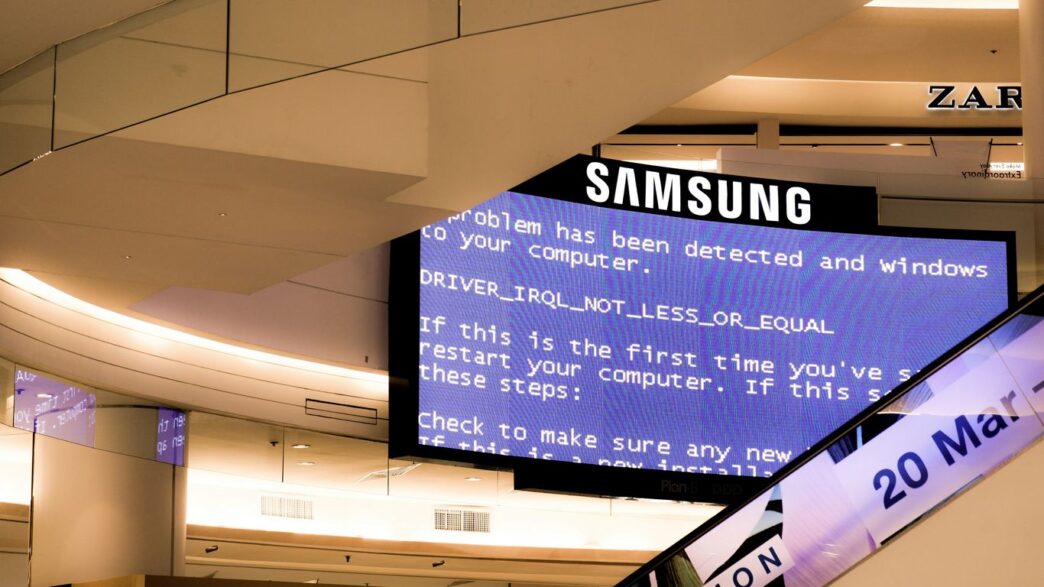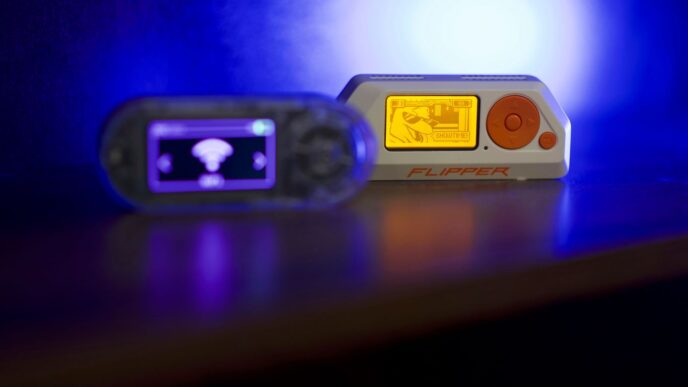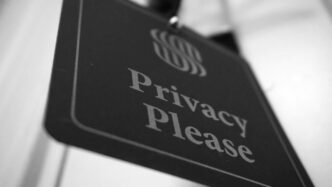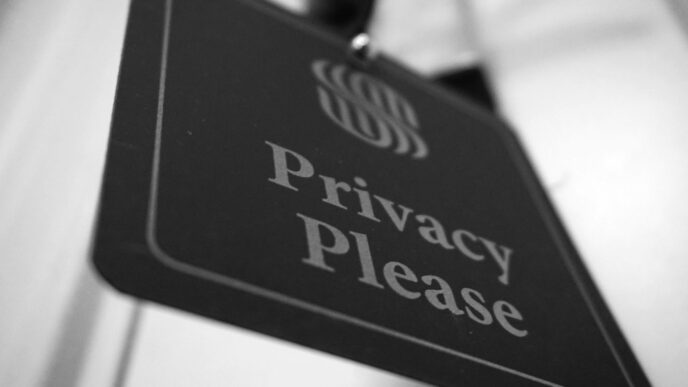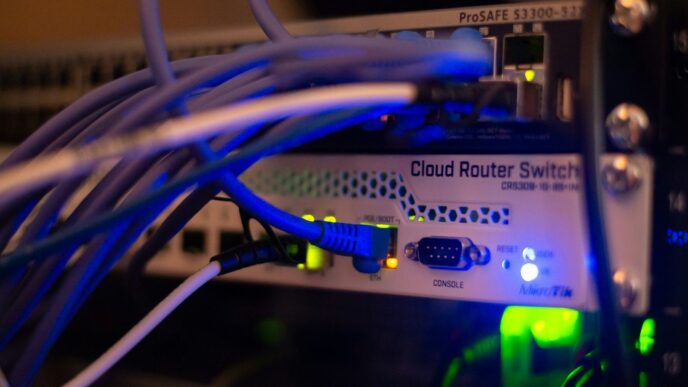You know, it’s kind of wild how much of our lives are online these days. Every time you sign up for something, or even just browse, you’re leaving little digital breadcrumbs. And the scary part? Some of those breadcrumbs could be picked up by the wrong people. That’s where a cyber data leak checker comes in. It’s like a digital detective for your personal info, helping you see if your details have ended up in places they shouldn’t be.
Key Takeaways
- A cyber data leak checker helps you find out if your personal information has been exposed online.
- These tools scan the web and the dark web for data breaches that might contain your details.
- Understanding your digital footprint is important for assessing your risk of identity theft.
- Using a cyber data leak checker can guide you on steps to secure your online identity.
- Staying informed about data breaches and using strong security practices are vital for ongoing protection.
Understanding Your Digital Footprint
Think about all the places you leave a little piece of yourself online. Every website you visit, every form you fill out, every social media post – it all adds up. This collection of your online activity is what we call your digital footprint. It’s like a trail of breadcrumbs, but instead of leading back to your house, it leads back to you, revealing details about your habits, preferences, and personal information.
Is Your Personal Information Exposed to Hackers?
It’s a scary thought, but the reality is that many companies you interact with have had their databases breached. When this happens, the personal details they stored – things like your name, address, email, and sometimes even more sensitive data – can fall into the wrong hands. The sheer volume of data exposed in these breaches is staggering. It’s not just a few isolated incidents; it’s a constant stream of information being compromised.
Assessing Your Risk of Identity Theft
When your personal information is out there, it increases your risk of identity theft. Scammers can use stolen details to impersonate you, open fraudulent accounts, or even commit crimes in your name. The more data points they have about you, the easier it is for them to piece together a convincing fake identity. It’s like giving a burglar the keys to your house and a list of what’s inside.
The Importance of a Cyber Data Leak Checker
This is where a cyber data leak checker comes in. It’s a tool designed to sift through the vast amount of compromised data floating around online, including the dark web, to see if your information has shown up. Think of it as a digital detective that searches for your personal details in places they shouldn’t be. It helps you understand the extent of your exposure and gives you a starting point for taking action to protect yourself.
How a Cyber Data Leak Checker Works
So, how does one of these data leak checkers actually do its thing? It’s not magic, though it can feel like it when it finds your info. Think of it like a digital detective, constantly sifting through vast amounts of data to see if your personal details have shown up where they shouldn’t be.
Entering Your Email for Verification
The first step is usually pretty simple: you give the checker your email address. This is the main key they use to search for you. It’s important to know that reputable checkers will verify this email address with you first. They’ll send a confirmation link or code. This is to make sure it’s really you and not someone else trying to snoop on your information. They do this because your email is often one of the first pieces of data compromised in a breach and is linked to many other accounts.
Scanning the Web and Dark Web for Exposures
Once your email is verified, the checker gets to work. It doesn’t just look at one place; it scans a huge range of sources. This includes:
- Publicly accessible websites: Where data might have been accidentally leaked or posted.
- Known data breach databases: These are massive collections of information stolen from companies in past hacks.
- The "dark web": This is a hidden part of the internet where stolen data is often bought and sold. It’s a bit like a black market for personal information.
The checker compares your email (and sometimes other details you might provide) against all this data. It’s looking for any matches that indicate your information has been exposed.
Receiving Protection Guidance
Finding out your data has been leaked can be a bit alarming, right? That’s why good data leak checkers don’t just stop at finding the problem. After the scan, they’ll tell you what they found. This might include:
- Which specific data breaches your information appeared in.
- What types of personal details were exposed (like passwords, names, addresses, etc.).
- Where the data was found.
Based on this information, the checker will then give you advice on what to do next. This could be anything from changing passwords on affected accounts to setting up extra security measures or monitoring your financial accounts more closely. The goal is to help you take steps to protect yourself from potential identity theft or fraud.
What to Expect from a Data Leak Scan
So, you’ve decided to run a check to see if your personal details have shown up in any data leaks. That’s a smart move. When you use a data leak checker, it’s not just about getting a simple ‘yes’ or ‘no’ answer. It’s about understanding what kind of information might be out there and how serious the situation could be.
Discovering Exposed Personal Details
First off, the checker will tell you what information of yours might be floating around. This isn’t just your email address. It could be your name, your home address, phone number, date of birth, passwords, or even more sensitive stuff like credit card numbers or social security numbers. The more types of data found, the higher the risk. It’s like finding out not just that your wallet was lost, but that your ID, credit cards, and cash were all in it.
Understanding the Scope of Data Breaches
Data leaks aren’t all the same. Some might involve a few hundred records, while others can affect millions. A good checker will give you a sense of the scale. For example, you might see:
- Number of Exposed Records: This tells you how many people were affected in a specific breach.
- Affected Websites/Services: Knowing which companies or platforms had their data compromised helps you understand the context.
- Date of Breach: This gives you an idea of how recent the exposure is.
For instance, a recent breach might list:
| Company Name | Records Exposed | Breach Date |
|---|---|---|
| Legend Senior Living | 996,000 | Nov 13, 2025 |
| Archway Marketing Services | 1,000,000 | Nov 5, 2025 |
Seeing these numbers can be a bit alarming, but it’s better to know.
Identifying Specific Data Leak Incidents
Beyond just the numbers, a thorough scan will try to pinpoint the exact incidents where your data appeared. You might get a list of specific breaches, like:
- A breach at a retail company where your purchase history and address were exposed.
- A security forum leak that included your username and password.
- A breach at a healthcare provider that might have involved more sensitive personal information.
Knowing the specific incidents helps you take targeted action. If your password for a particular site was leaked, you know exactly which account needs immediate attention. It’s not just a general worry; it’s a concrete list of places to check and secure.
Securing Your Digital Identity
So, you’ve run a check and found out some of your personal details have popped up in a data leak. Bummer, right? It’s easy to feel a bit overwhelmed, but don’t panic. Taking proactive steps now can really make a difference in protecting yourself from future trouble.
Taking Action After a Data Leak
Finding your information in a breach means you need to act. Think of it like finding a small leak in your roof – you don’t wait for the whole ceiling to collapse. Here’s what you should do:
- Change Passwords Immediately: If the leaked data included passwords, or even if it didn’t but the breach was significant, change the password for that specific account. If you reuse passwords (and honestly, who hasn’t?), change them for any other sites where you used the same one. Use a mix of upper and lowercase letters, numbers, and symbols.
- Enable Two-Factor Authentication (2FA): Wherever possible, turn on 2FA. This adds an extra layer of security, usually a code sent to your phone, making it much harder for someone to get into your account even if they have your password.
- Monitor Your Accounts: Keep a close eye on your bank statements, credit card activity, and any other financial accounts. Look for any transactions you don’t recognize. Set up alerts if your bank offers them.
- Be Wary of Phishing Attempts: Scammers often use information from data leaks to make their phishing emails or texts look more convincing. If you get an unexpected email asking for personal information or urging you to click a link, be extra cautious. It might be a scam trying to get more of your data.
Implementing Strong Password Practices
Passwords are like the keys to your digital house. You wouldn’t use the same flimsy key for your front door, your car, and your safe, right? Your online accounts deserve the same level of protection.
- Unique Passwords for Every Site: This is a big one. If one site gets breached, hackers won’t be able to use that password to access your other accounts. It sounds like a lot to remember, but that’s where password managers come in handy.
- Use a Password Manager: These tools generate super strong, random passwords for you and store them securely. You only need to remember one master password to access all your other passwords. It’s a game-changer for online security.
- Avoid Obvious Information: Don’t use your birthday, your pet’s name, or simple words like "password123". Hackers look for these easy targets first. Think random combinations.
Staying Informed About Future Breaches
Data breaches aren’t a one-time event. They happen constantly. Being aware and having a system in place to get notified can save you a lot of headaches down the line.
- Sign Up for Breach Notification Services: Many services, like the one you might be using to check for leaks, offer alerts. They’ll let you know if your information shows up in a new breach, so you can take action quickly.
- Follow Reputable Cybersecurity News: Keeping up with major data breaches reported in the news can give you an idea of which companies or services might have been affected. If you use a service that’s in the news for a breach, it’s a good prompt to check your own status.
- Regularly Re-Check Your Information: Even if you’re clean today, new breaches happen all the time. Make it a habit to run a check every few months, or whenever you hear about a large-scale data leak.
The Growing Threat of Data Exposure

It feels like every other week there’s a news story about a massive data breach. It’s not just big companies either; smaller businesses and even government agencies are getting hit. This constant stream of exposed information means more of our personal details are out there than ever before. The sheer volume of leaked records is staggering.
Think about it: we’re talking about billions of records compromised. These aren’t just email addresses; they can include names, phone numbers, physical addresses, social security numbers, and even financial information. When this data falls into the wrong hands, the consequences can be severe.
Here’s a look at some numbers that really put things into perspective:
- Exposed Records: As of late 2025, there have been over 26 billion records found in data breaches. That’s a lot of personal information floating around.
- Financial Losses: The impact isn’t just theoretical. In the US alone, personal financial losses due to data breaches have been significant. While the average cost of a breach has seen some reduction, the individual impact can still be devastating.
- Rise in Scams: With more data available, criminals are getting smarter. We’ve seen a notable increase in phishing attempts and various online scams, often using bits of stolen information to make their attacks more convincing.
This isn’t a problem that’s going away. In fact, it’s getting worse. The more connected we are online, the more digital breadcrumbs we leave behind, making us potential targets. Staying aware of these threats and taking steps to protect yourself is more important than ever. Checking if your information has been compromised is a good first step in securing your digital identity.
It’s easy to feel overwhelmed by the scale of it all, but understanding the risks is the first step. Knowing that your data might be out there is half the battle. The next step is finding out where and what to do about it.
Choosing a Reliable Cyber Data Leak Checker

So, you’ve decided to check if your personal info has been floating around online. That’s a smart move. But with so many tools out there, how do you pick one that actually does a good job? It’s not just about finding a checker; it’s about finding a reliable one.
Features of Effective Data Leak Tools
When you’re looking at these checkers, think about what they actually do. A good one doesn’t just scan a small list of known breaches. It should be digging deeper, looking in places where your data might end up after a hack.
- Broad Scanning Capabilities: The best tools check not just the regular web but also the darker corners of the internet, often called the ‘dark web’. This is where stolen data frequently shows up.
- Real-time Alerts: If your information pops up somewhere new, you want to know right away. Look for services that offer notifications so you can react quickly.
- Clear Reporting: The results should be easy to understand. You shouldn’t need a degree in computer science to figure out if your data is exposed and where.
- Actionable Advice: Just knowing your data is out there isn’t always enough. A good checker will give you practical steps on what to do next to protect yourself.
The Role of Anonymous Searching
This is a big one. When you use a data leak checker, you’re essentially asking it to look for your information. You don’t want that search itself to create a new risk. A truly reliable checker will allow you to search anonymously. This means they don’t keep records of what you searched for or link it back to you. They’re just doing the search and giving you the results. If a service asks for a lot of personal details just to run a basic check, or if they’re unclear about their data handling, that’s a red flag.
Benefits of Breach Notification Services
Think of breach notification services as your digital watchdogs. Once you’ve signed up, they keep an eye out for you. If your email address, phone number, or other details appear in a newly discovered data breach, they send you an alert. This is super helpful because new breaches happen all the time. It’s hard to keep track of them all yourself. These services can save you a lot of worry and give you a heads-up so you can change passwords or take other protective steps before any real damage is done. Some services even offer help with identity theft recovery, which can be a lifesaver if the worst happens.
So, What’s the Takeaway?
Look, nobody wants to think their personal stuff is floating around out there for just anyone to grab. Using a free checker is a pretty simple way to get a peek behind the curtain and see if your email has popped up in any known data dumps. It’s not a magic fix, but it’s a good first step. If it turns out your info is out there, don’t panic. Just take it as a sign to tighten up your online security. Change those passwords, maybe look into a password manager, and be extra careful about what you click on. Staying aware is half the battle, and these tools can help you do just that.
Frequently Asked Questions
What exactly is a data leak checker?
Think of a data leak checker like a detective for your online information. It searches through huge lists of stolen data from various hacks to see if your personal details, like your email or password, show up. If they do, it means your info might be out there where bad guys can find it.
Why should I care if my information is leaked?
When your personal info gets leaked, it’s like leaving your house keys lying around. Hackers can use this information to try and break into your other online accounts, steal your identity, or even trick you into giving them money. It puts you at risk for a lot of trouble.
How does a data leak checker find my information?
Most checkers ask for your email address. They then compare this email against massive databases of information that have been stolen in data breaches. Some advanced tools also look in places where stolen data is often sold, like the ‘dark web’.
Is it safe to give my email to a data leak checker?
Reputable data leak checkers are designed to be safe. They usually don’t store your search data and often have features for anonymous searching. It’s always a good idea to use well-known services that have clear privacy policies.
What should I do if my information is found in a leak?
If your info is found, don’t panic! The first step is to change the passwords for any accounts associated with that email, especially if you reused passwords. It’s also smart to enable two-factor authentication wherever possible and keep an eye on your bank accounts for any suspicious activity.
Can a data leak checker prevent future leaks?
A checker itself can’t stop leaks from happening, but it can alert you if your information is compromised in a new breach. This early warning lets you take action quickly to protect yourself, like changing passwords before hackers can use the stolen data.


